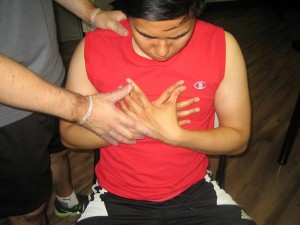Asthma is an inflammatory condition characterized by a reversible obstruction of the airflow and airway over responsiveness. This condition can happen at any age, and requires long-term follow-up. Asthma is chronic in nature and difficult to cure, but it can be prevented and kept under control. Proper management can make people suffering from asthma lead a good quality of life. If you want to learn how to properly manage asthma, click here.
Various forms of asthma
- Allergic asthma. It is the most common type. It usually develops during childhood, and there is family history of allergies. Exposure to allergen can cause allergic asthma.
Some allergens that cause allergic asthma are smoke from cigarettes, fumes from household sprays, wood fires, paint, gasoline, perfumes and scented soaps and they can inflame the sensitive airways.
- Non-allergic asthma. A form of asthma that develops after the person reaches the age of 30, and is not associated with allergies.
Smoke, cold air, cleaning fumes, perfumes and gastroesophageal reflux disease can cause non allergic asthma. Non-allergic asthma is less responsive to treatment.
- Exercise-induced asthma. It is a type of asthma in which engaging in energetic activity causes an airway constriction in individuals with intensified reactivity of the airway. This happens to people who have allergies or families with history of allergies.
- Occupational asthma. It is the common work-related respiratory disorder. High concentrations of gases, fumes, chemical or dust are environment that can cause occupational asthma. There are two types of occupational asthma basing on the onset of symptoms; it is either immediately after the exposure (non-latent) and a prolonged period of exposure which is latent.
Symptoms of asthma

- Shortness of breath known as dyspnea happens during exertion and night time.
- Wheezing – a sound like whistling or hissing when breathing out.
- Chest tightness – may happen with or without symptoms
- A chronic coughing, usually at night and in early morning and happens after exercise or exposing to cold dry air.
Treatment for asthma
- Find out if the patient has an individualized asthma plan, if there is, follow the direction for giving medication.
- If the patient does not have a plan, let the person sit in upright position and loosen tight clothing.
- If the patient has inhaler, assist the patient in using it.
- Let the person use inhaler with a spacer if it is possible. Let the patient breathe in slowly through the mouth for 10 seconds, and give four puffs, wait a minute between each puff.
- The patient should be breathing in a slow and deeply in about five to seven seconds and hold his or her breath for 10 seconds. Have a total of four puffs, and wait for one minute between each puff.
- If there is still problem with the breathing, continue using the inhaler. Wait for four minutes after four puffs, if there is difficulty in breathing give another set of four puffs, until medical help arrives.
- Always monitor the patient until medical help arrives.